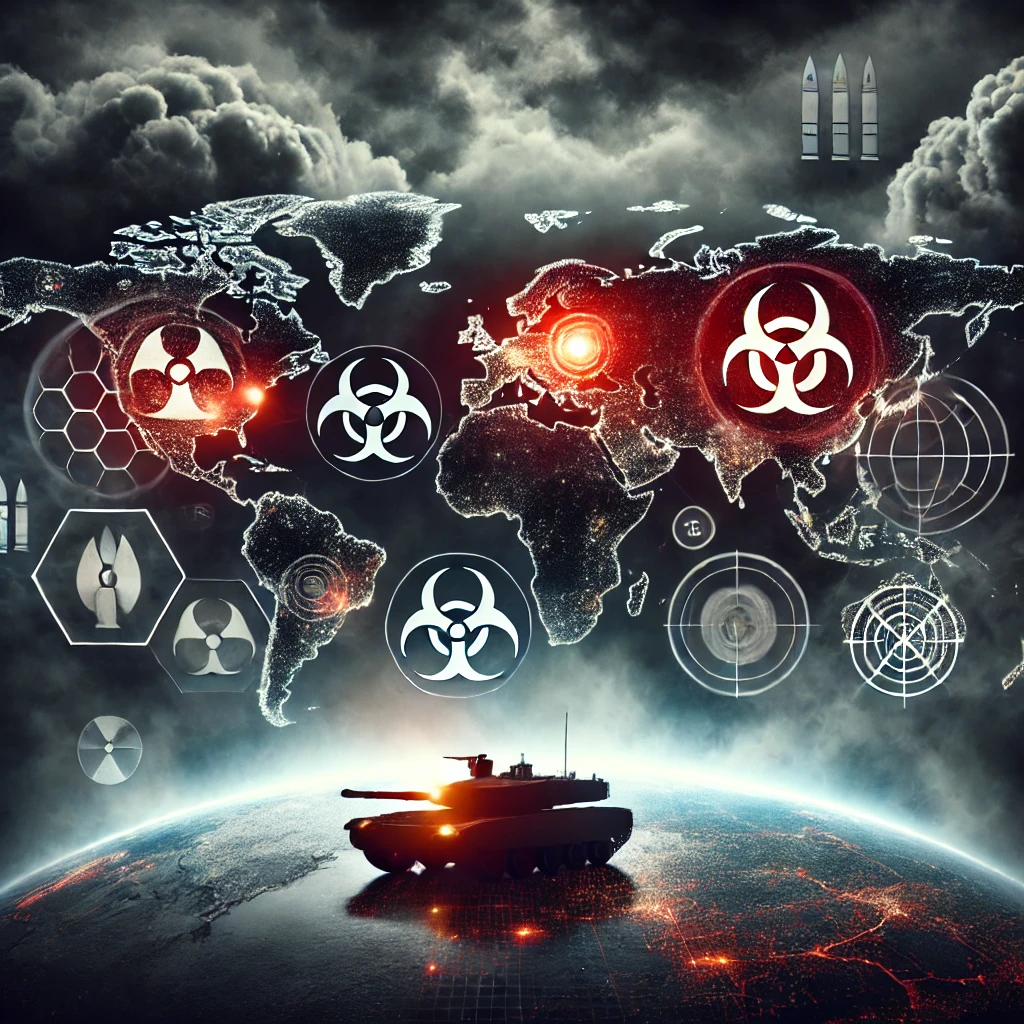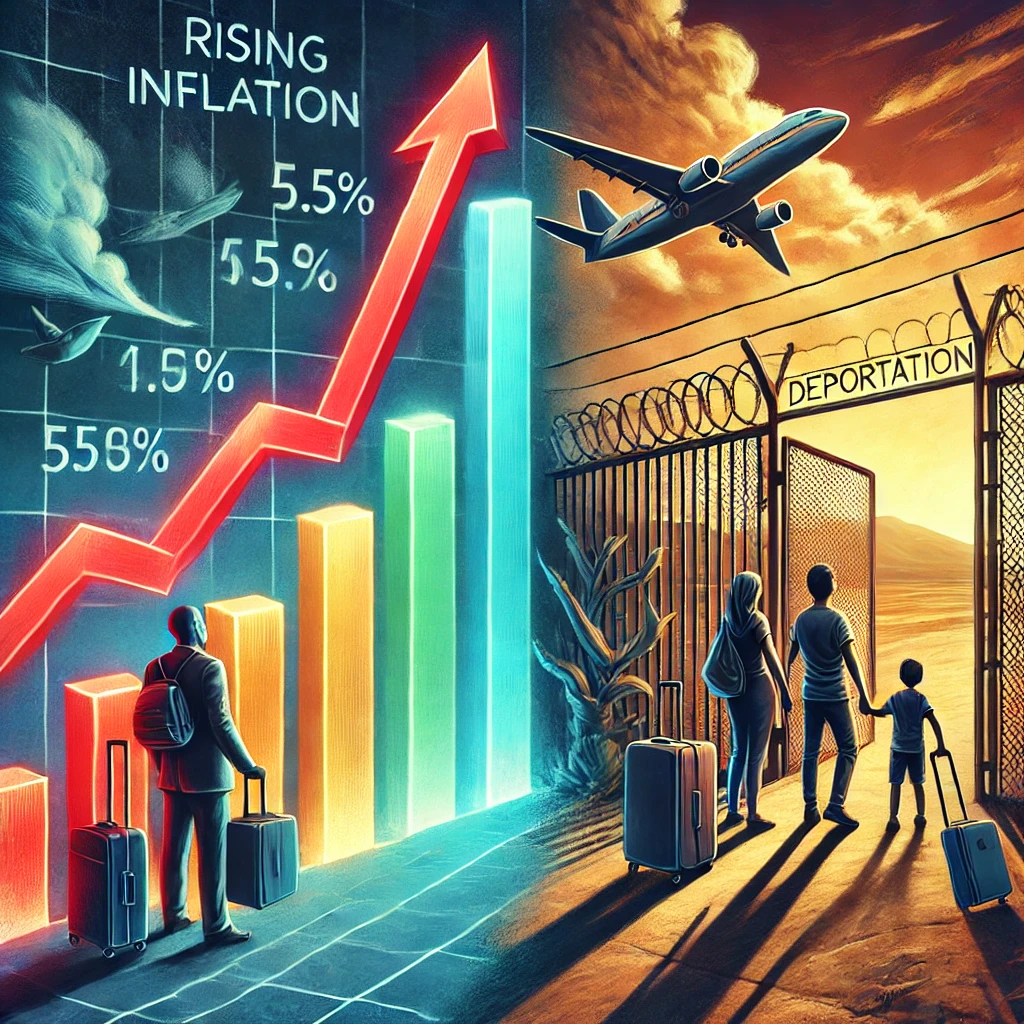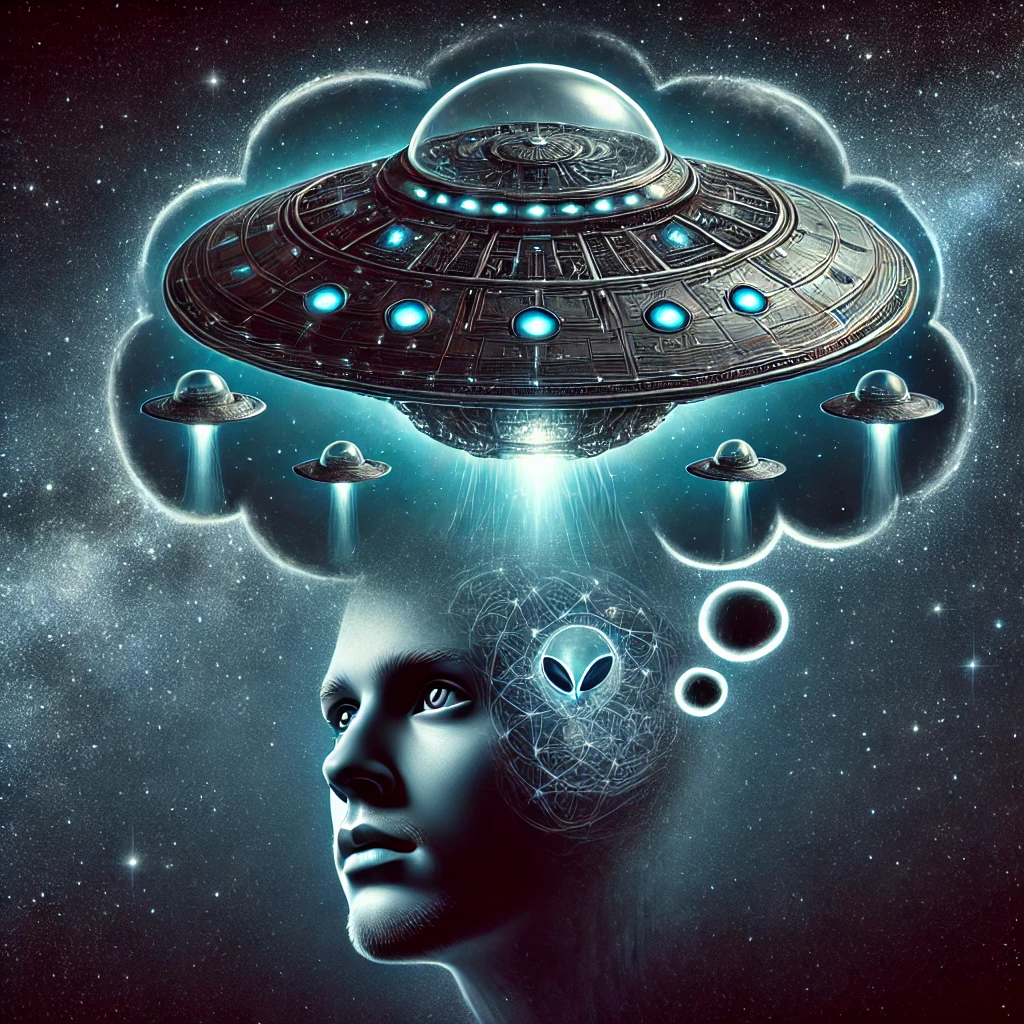Summary: The Russia-Ukraine conflict, now in its 1,000th day, has entered a volatile and deeply concerning phase. From updated nuclear doctrines to war preparedness efforts in Europe, the situation reveals the growing complexity of global involvement in the war. This article examines the latest developments, their implications, and the potential paths forward.
Russia’s New Nuclear Doctrine
One of the most alarming developments in the conflict is Russian President Vladimir Putin’s decision to lower the threshold for deploying nuclear weapons. Under the revised atomic doctrine, a nuclear response is now permissible even for conventional attacks from nations supported by nuclear powers, such as NATO allies (Associated Press, 2024).1 This significant policy shift signals Moscow’s readiness to escalate its confrontation with the West.
The timing of this change coincides with Ukraine’s use of U.S.-supplied ATACMS missiles to strike military assets in Russia’s Bryansk region. While Russian officials claimed to have intercepted most of the rockets, this marked a significant escalation in Ukraine’s military capabilities (Arhirova & Novikov, 2024).2 The revised doctrine reflects Russia’s growing frustration with NATO’s support for Ukraine and its willingness to use extreme measures to maintain its position.
Ukraine’s Strategic Resilience
In response to escalating aggression, Ukrainian President Volodymyr Zelenskyy has outlined an ambitious plan to boost domestic military production. By 2025, Ukraine aims to manufacture 30,000 drones and 3,000 long-range missiles to reduce dependence on Western military aid (Arhirova & Novikov, 2024). This resilience strategy demonstrates Ukraine’s determination to maintain its defenses despite significant resource constraints.
However, the civilian cost of the war continues to mount. Recent Russian strikes on Sumy and Odesa killed dozens of people and injured many more, including children. These attacks underscore the heavy toll the war is taking on non-combatants, with schools, homes, and other civilian infrastructure frequently targeted (Kukreti, 2024).
Zelenskyy has repeatedly emphasized that such strikes illustrate Russia’s lack of interest in peace negotiations. “Each new attack by Russia only confirms Putin’s true intentions. He wants the war to continue,” Zelenskyy said, urging international allies to strengthen their support (Arhirova & Novikov, 2024).
European Nations Preparing for War
The conflict’s ripple effects are felt across Europe, particularly in Nordic countries like Sweden and Finland. Sweden has distributed over five million pamphlets to its citizens, guiding surviving nuclear or conventional attacks. Finland has also launched a comprehensive war preparedness website, emphasizing readiness needs (Kukreti, 2024).
Both nations and Norway have taken these steps as they deepen their ties with NATO following decades of military neutrality. Sweden’s Civil Defence Minister Carl-Oskar Bohlin stated, “We will never give up if Sweden is attacked,” reinforcing the country’s commitment to resistance (Kukreti, 2024).
These measures highlight the growing anxiety in Europe about the potential for the conflict to spill over into neighboring regions. The proactive stance of these nations reflects a recognition that the security landscape has fundamentally changed since the onset of the war.
Tensions Over U.S. Policies
President Joe Biden’s decision to authorize Ukraine’s use of long-range weapons has sparked significant debate. Critics, including U.S. President-elect Donald Trump, have argued that such actions risk escalating the conflict into World War III (Kukreti, 2024). Trump’s supporters have claimed that the decision caters to the military-industrial complex rather than prioritizing global stability.
Russian officials have similarly condemned the move, framing it as a direct escalation and linking it to NATO’s deeper involvement in the conflict. This criticism underscores the growing tension between the United States and Russia, with both sides accusing the other of exacerbating the situation (Associated Press, 2024).
North Korea’s Role in the Conflict
In a move that has further complicated the geopolitical landscape, Russia has reportedly deployed thousands of North Korean troops to support its war efforts in Ukraine. This development marks a significant internationalization of the conflict, drawing sharp criticism from global leaders (Arhirova & Novikov, 2024). The involvement of North Korea signals the deepening alliances between authoritarian regimes, adding another layer of complexity to the war.
The deployment of North Korean forces also raises questions about the long-term implications of such partnerships. While the immediate goal may be to bolster Russia’s military capabilities, the broader impact on global diplomacy and security cannot be ignored.
Global Reactions and Implications
The international response to these developments has been swift and varied. Western leaders have condemned Russia’s nuclear rhetoric and its use of North Korean troops. British Prime Minister Keir Starmer described Russia’s actions as “irresponsible,” while NATO Secretary-General Mark Rutte reaffirmed the alliance’s commitment to supporting Ukraine (Kukreti, 2024).
At the same time, European nations are ramping up their defense strategies. Germany and Sweden, in particular, have pledged not to be intimidated by Russia’s aggressive tactics. This firm stance highlights the growing resolve among NATO-aligned countries to deter further aggression.
The implications of these developments are profound:
- Nuclear Risks: The lowered threshold for nuclear weapons use significantly increases the risk of a catastrophic global confrontation.
- Regional Stability: The growing militarization of Nordic countries reflects the broader regional impact of the war.
- Global Alliances: The involvement of North Korea and the strengthening of NATO ties underscore the internationalization of the conflict.
What Happens Next?
The Russia-Ukraine conflict has reached a critical juncture with higher stakes than ever. The lowered nuclear threshold, increased civilian casualties, and heightened global tensions emphasize the urgent need for diplomatic efforts to prevent further escalation. As the world watches, the question remains: Can peace be achieved in a profoundly entrenched conflict?
The coming months will be pivotal, not just for Ukraine and Russia, but for the entire global order. The decisions made now will shape the course of international relations for years to come.
Escalation in Global Tensions as Nuclear and Conventional Warfare Risks Grow
Meta Description: The Russia-Ukraine conflict reaches a dangerous turning point as nuclear risks, European war preparedness, and international tensions rise. Explore key developments shaping global security.
Keywords: Russia, Ukraine, NATO, nuclear doctrine, war preparedness, Sweden, Finland, global tensions, Zelenskyy, Putin, North Korea
The Russia-Ukraine conflict, now in its 1,000th day, has entered a volatile and profoundly concerning phase. From updated nuclear doctrines to war preparedness efforts in Europe, the situation reveals the growing complexity of global involvement in the war. This article examines the latest developments, their implications, and the potential paths forward.
Russia’s New Nuclear Doctrine
One of the most alarming developments in the conflict is Russian President Vladimir Putin’s decision to lower the threshold for deploying nuclear weapons. Under the revised atomic doctrine, a nuclear response is now permissible even for conventional attacks from nations supported by nuclear powers, such as NATO allies (Associated Press, 2024a). This significant policy shift signals Moscow’s readiness to escalate its confrontation with the West.
The timing of this change coincides with Ukraine’s use of U.S.-supplied ATACMS missiles to strike military assets in Russia’s Bryansk region. While Russian officials claimed to have intercepted most of the rockets, this marked a significant escalation in Ukraine’s military capabilities (Arhirova & Novikov, 2024). The revised doctrine reflects Russia’s growing frustration with NATO’s support for Ukraine and its willingness to use extreme measures to maintain its position.
Ukraine’s Strategic Resilience
In response to escalating aggression, Ukrainian President Volodymyr Zelenskyy has outlined an ambitious plan to boost domestic military production. By 2025, Ukraine aims to manufacture 30,000 drones and 3,000 long-range missiles to reduce dependence on Western military aid (Arhirova & Novikov, 2024). This resilience strategy demonstrates Ukraine’s determination to maintain its defenses despite significant resource constraints.
However, the civilian cost of the war continues to mount. Recent Russian strikes on Sumy and Odesa killed dozens of people and injured many more, including children. These attacks underscore the heavy toll the war is taking on non-combatants, with schools, homes, and other civilian infrastructure frequently targeted (Kukreti, 2024).
Zelenskyy has repeatedly emphasized that such strikes illustrate Russia’s lack of interest in peace negotiations. “Each new attack by Russia only confirms Putin’s true intentions. He wants the war to continue,” Zelenskyy said, urging international allies to strengthen their support (Arhirova & Novikov, 2024).
European Nations Preparing for War
The conflict’s ripple effects are felt across Europe, particularly in Nordic countries like Sweden and Finland. Sweden has distributed over five million pamphlets to its citizens, guiding surviving nuclear or conventional attacks. Finland has also launched a comprehensive war preparedness website, emphasizing readiness needs (Kukreti, 2024).
Both nations and Norway have taken these steps as they deepen their ties with NATO following decades of military neutrality. Sweden’s Civil Defence Minister Carl-Oskar Bohlin stated, “We will never give up if Sweden is attacked,” reinforcing the country’s commitment to resistance (Kukreti, 2024).
These measures highlight the growing anxiety in Europe about the potential for the conflict to spill over into neighboring regions. The proactive stance of these nations reflects a recognition that the security landscape has fundamentally changed since the onset of the war.
Tensions Over U.S. Policies
President Joe Biden’s decision to authorize Ukraine’s use of long-range weapons has sparked significant debate. Critics, including U.S. President-elect Donald Trump, have argued that such actions risk escalating the conflict into World War III (Kukreti, 2024). Trump’s supporters have claimed that the decision caters to the military-industrial complex rather than prioritizing global stability.
Russian officials have similarly condemned the move, framing it as a direct escalation and linking it to NATO’s deeper involvement in the conflict. This criticism underscores the growing tension between the United States and Russia, with both sides accusing the other of exacerbating the situation (Associated Press, 2024a).
North Korea’s Role in the Conflict
In a move that has further complicated the geopolitical landscape, Russia has reportedly deployed thousands of North Korean troops to support its war efforts in Ukraine. This development marks a significant internationalization of the conflict, drawing sharp criticism from global leaders (Arhirova & Novikov, 2024). The involvement of North Korea signals the deepening alliances between authoritarian regimes, adding another layer of complexity to the war.
The deployment of North Korean forces also raises questions about the long-term implications of such partnerships. While the immediate goal may be to bolster Russia’s military capabilities, the broader impact on global diplomacy and security cannot be ignored.
Global Reactions and Implications
The international response to these developments has been swift and varied. Western leaders have condemned Russia’s nuclear rhetoric and its use of North Korean troops. British Prime Minister Keir Starmer described Russia’s actions as “irresponsible,” while NATO Secretary-General Mark Rutte reaffirmed the alliance’s commitment to supporting Ukraine (Kukreti, 2024).3
At the same time, European nations are ramping up their defense strategies. Germany and Sweden, in particular, have pledged not to be intimidated by Russia’s aggressive tactics. This firm stance highlights the growing resolve among NATO-aligned countries to deter further aggression.
The implications of these developments are profound:
- Nuclear Risks: The lowered threshold for nuclear weapons use significantly increases the risk of a catastrophic global confrontation.
- Regional Stability: The growing militarization of Nordic countries reflects the broader regional impact of the war.
- Global Alliances: The involvement of North Korea and the strengthening of NATO ties underscore the internationalization of the conflict.
Conclusion
The Russia-Ukraine conflict has reached a critical juncture with higher stakes than ever. The lowered nuclear threshold, increased civilian casualties, and heightened global tensions emphasize the urgent need for diplomatic efforts to prevent further escalation. As the world watches, the question remains: Can peace be achieved in a profoundly entrenched conflict?
The coming months will be pivotal, not just for Ukraine and Russia, but for the entire global order. The decisions made now will shape the course of international relations for years to come.
References
- Associated Press. (2024a, November 19). Putin lowers the threshold for using his nuclear arsenal after Biden’s arms decision for Ukraine. Associated Press. https://apnews.com/article/russia-nuclear-doctrine-putin-91f20e0c9b0f9e5eaa3ed97c35789898 ↩︎
- Arhirova, H., & Novikov, I. (2024, November 19). Moscow says Ukraine fired 6 US-made longer-range missiles into Russia. Associated Press. Retrieved from https://apnews.com/article/russia-ukraine-war-1000-days-attack-06002c8c50bfb2fc622f446a8580bc0e ↩︎
- Kukreti, S. (2024, November 18). Sweden, Finland urge citizens to get ready for ‘war’ as Biden accused of triggering WWIII with missile decision. Hindustan Times. https://www.hindustantimes.com/world-news/us-news/sweden-finland-urge-citizens-to-get-ready-for-war-as-biden-accused-of-triggering-wwiii-with-missile-decision-101731944559667.html ↩︎






Leave a Reply